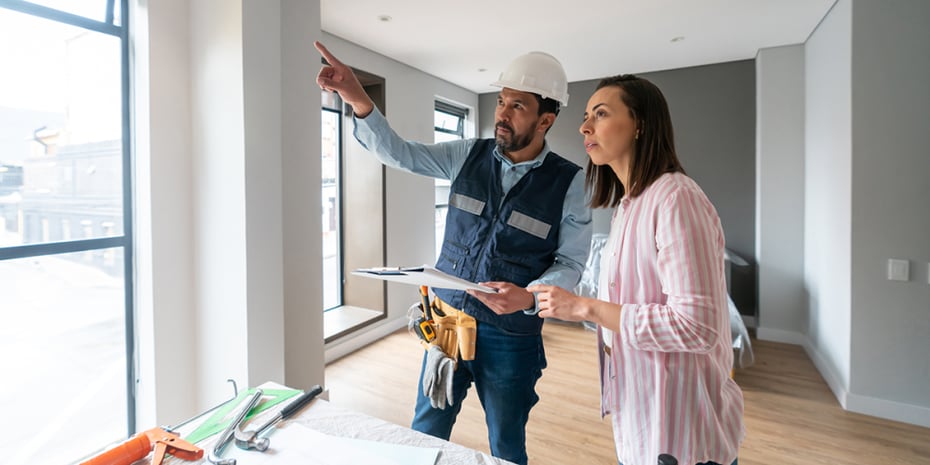Buying a new home is exciting and scary which is why you want to make sure everything in the house is up to code, safe, and won’t need costly repairs a month after moving in. Home inspections are a crucial step in the home-buying process that offers you peace of mind and visibility into any potential problems.
With our home inspection checklist, you can be completely prepared and learn everything you need to know about inspections.
What Is a Home Inspection?
A home inspection is a non-invasive visual inspection of a home’s physical structure and its systems. They occur when a seller accepts an offer from a potential buyer. If nothing drastic appears and everyone is in agreement, a purchase order is signed and the house is now in escrow.
However, if you do find an issue, you can negotiate with the seller for a lower price or to have the issue fixed before closing. You can even decide to cancel the deal if the problem is too big or you can’t come to an agreement with the seller for a lower price.
How Much Does the Average Home Inspection Cost?
The home buyer is the one who usually fronts the cost for a home inspection because it’s a service that protects them from the undue burden of moving into a home with lots of problems. The average cost of a home inspection can range from $300 to $450. The gap in price stems from different factors such as the location, age, and size of the home.
Although that may seem like a large sum upfront, it could save you an even bigger expense down the road. Noticing a problem with the roof during the inspection would save you around $11,000 in roof repairs or replacement!
What to Look for in a Home Inspection: A Checklist
After finding a home inspector you trust, they’ll head to the house in question and search every part of the structure. Even though you’re not the one doing the actual inspection, it’s good to know what they’re looking for so you can ask the appropriate questions and better understand the extent of the damage.
1. Home Exterior & Grounds
- Foundation appears in good condition with no significant cracks
- No evidence of leaks from the septic tank
- Drainage away from the house with no standing water
- Easily accessible crawl spaces to get to the plumbing
- Exterior walls appear straight with no sagging
- Windows and door frames appear square
- The siding appears in good condition with no cracks or damage
- Bricks appear undamaged with no cracks in joints
- The paint is not flaking or stained
- Roof shingles are not missing or damaged
- Gutters show no decay and drain properly
- Chimneys appear straight and undamaged
- The detached garage, shed, fence, and/or deck appears in good condition with no rotted wood or evidence of termites
2. The Basement
- No evidence of moisture
- No evidence of water damage to the above floor
- The sump pump operates properly
3. The Attic
- No evidence of staining from the roof
- The structure shows no damage or decay
- Adequate ventilation through soffit vents and end louvers
- Insulation is sufficient and installed properly
- Electrical splices are contained
4. The Bathroom
- The visible plumbing under the sink is in good condition and shows no signs of water damage
- Adequate water pressure for hot and cold water at all fixtures
- The tub, shower, and sinks drain smoothly
- The toilet flushes and fills properly
- The toilet is stable, with no rocking or stains at its base
- No evidence of leaking around the base of the tub or shower
5. The Kitchen
- The visible plumbing under the sink is in good condition and shows no signs of water damage
- Working exhaust fan vents to outside
- Garbage disposal is operational
- Water flow to sink is adequate and drains properly
- Built-in appliances operate properly
6. Electrical Systems and Heating & Cooling
- The wiring is in good condition
- The service panel has a normal capacity with cables attached correctly
- Cables are secured and protected
- No exposed electrical splices
- No gas odor
- Air conditioning and heating operate well
- Air filters are clean
- Flues have no open seams and slow up to chimney connection
- The cooling unit has no visible rust
7. Plumbing & Water Systems
- The visible pipes have no damage or evidence of leaks
- The water heater shows no signs of rust
- Water pressure falls within the accepted range
- Hot water temperature does not exceed 125 degrees Fahrenheit
The Seller's Disclosure Statement
All of the information that the home inspector collects is written up in a home inspection report. In addition to this report, the home’s seller will draft a seller’s disclosure statement. This statement, along with the report, will help the potential buyer get the whole picture of what they’re buying.
The seller’s disclosure statement outlines all the details or problems with the house that the seller knows about, potentially identified during preconstruction, that otherwise might not be obvious. Requirements for this document depend on local, state, or federal laws. It’s beneficial for sellers to draft an accurate statement because it can protect them from being sued by the buyers after the sale is complete.
HOVER Can Streamline the Process
Our technology makes it easy to assess the damage. Homeowners can use the HOVER app on their smartphone to take photos of their property. HOVER then uses those pictures to provide inspectors or insurance adjusters with highly accurate and detailed measurements and information. With the app’s precise property calculations, they’ll have exactly what they need to process claims and write reports almost instantly.





